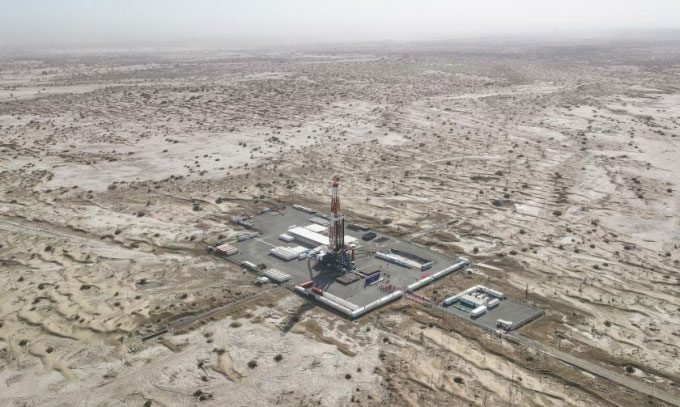The drilling project aimed at scientific exploration began at 11:46 AM local time on May 30 at the Tarim Basin, Xinjiang Autonomous Region.
Designed to reach a depth of 11,100 meters, the new drilling hole is located deep within the Taklamakan Desert – the largest desert in China. This marks a pivotal moment in China’s deep Earth exploration efforts, providing an unprecedented opportunity to study areas lying deep beneath the planet’s surface.

Aerial photo taken on May 30 shows the drilling project over 10,000 meters deep for scientific research in the Xinjiang Autonomous Region. (Photo: Xinhua)
The Tarim Basin is one of the most challenging areas to explore due to its harsh land environment and complex underground conditions. During the drilling process, equipment including drill bits and pipes weighing over 2,000 tons will penetrate the Earth, traversing more than 10 continental strata, including the Cretaceous system.
According to Wang Chunsheng, a technical expert involved in the project, drilling deeper than 10,000 meters is a bold effort to explore unknown territories of the Earth and expand human knowledge. “The construction difficulties of the drilling project can be compared to a large truck running on two thin steel cables,” remarked Sun Jinsheng, a scholar at the Chinese Academy of Engineering.
Previously, China drew attention by drilling the Yuejin 3-3 oil well to a depth of 9,472 meters in the Tarim Basin on May 1. This will be the deepest oil well in Asia, marking a significant breakthrough in ultra-deep oil and gas exploration and helping China boost crude oil production. To overcome the harsh conditions of high temperatures and pressures at depths beyond 9,000 meters, Sinopec has improved drilling technology, making China one of the few countries in the world capable of drilling wells deeper than 10,000 meters.


















































